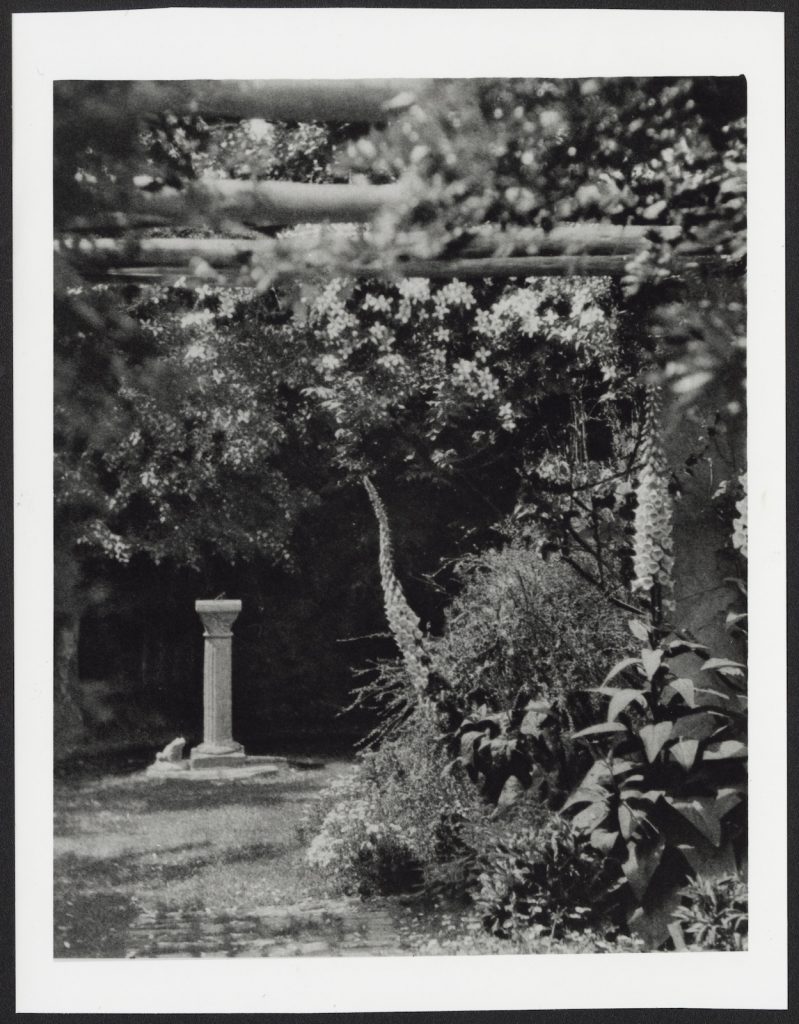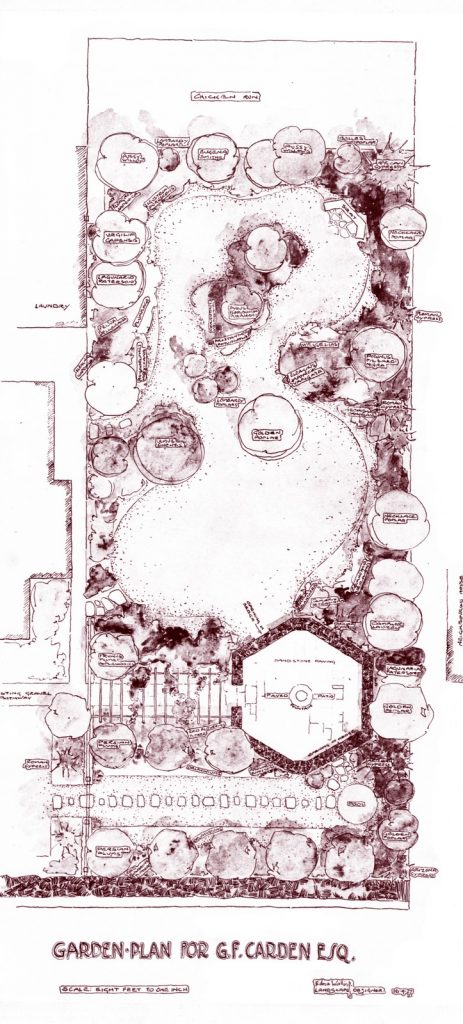‘If gardening does not teach one to be flexible, would anything?’ 1
Edna Walling was a trailblazing Australian garden designer of the 20th century. Her passion, uncompromising vision and way with words changed the way we think about our gardens. Walling was a keen photographer whose garden design style left a lasting mark on Australian gardens – from grand manor houses to suburban gardens. Her books, photographs and regular column in the Australian home beautiful chronicle the evolution of her talent and her understanding of the unique challenges and delights of gardening in Australia.

Having spent her early years in England, Edna’s style was heavily influenced by the cottage gardens and formal manor-house gardens she experienced as a girl. Her garden designs and plant preferences evolved over the course of her gardening life: beginning with safe, European choices like Silver Birches and roses,2 before moving on to wilder and hardier plants – often Australian natives. She also warmed to a style of gardening that incorporated elements of Mediterranean design, such as creating outdoor living areas, which are often more suited to Australian climates.
Her hand-drawn plans depicted a strong style from the very early days. Edna was a great lover of structure but always worked to soften the boundaries; to shape the built environment so that it complimented the natural one. Seen here is her Garden Plan for G. F. Carden Esquire, which shows the ‘natural’ flow of shrubs and trees, and the way they create secluded spaces. Edna’s love of structure can still be seen in the rigid walkways, paved areas and sturdy pergolas. Her plantings alongside the chicken-run illustrate how she softened the hard edges, even while relying on them for a sense of order: here they provide ‘walls’ for her garden rooms.

Always a fan of plants ‘of a very hardy nature’3 that would naturalise, this aspect of the Walling style became more prominent as her career developed. In a column largely dedicated to hardy plants, Walling wrote of begging some cuttings of Italian lavender while visiting friends. She later notes, ‘we now have it gracing the hottest, driest and hungriest places in the garden. Spring in the garden is all the cheerier for its presence.’ 4 This ‘survival of the fittest’ ethos sat well with her belief that houses should blend with the landscape and become part of nature. This view of the path at Lynton Lea (at Mooroolbark) shows the dooryard’s irregular paving alongside plantings of heat-tolerant seaside daisies, geraniums and rosemary, which provide green shelter from the sun, and bursts of colour and fragrance throughout the year.

Edna’s writings of the later period reflect an increasing intolerance for control of the natural environment. She described the maintenance of trees around Melbourne as ‘just shy of mutilation’. Her 1926 reaction to the pruning of trees along Melbourne’s Alexandra Avenue is both damning and mournful:
Their form is marred forever – one enjoys no more the delicate tracery of their branches in winter or the natural density of their foliage in summer. So many years must elapse before they recover even a semblance of their former beauty, and then there is no guarantee that they will be allowed to do so.5
In writings of this era, she increased her calls for plant choices that reflected her love of the hardy and the meandering, including an increased focus on plants such as feijoa and rock ferns. This focus on the tough and the wild is possibly Walling’s greatest gift to Australian gardeners, freeing us (somewhat) from the disappointment of trying to nurture a delicate annual through the Australian summer and inviting us instead to appreciate the joy of an unruly rosemary bush or a spreading snake vine.
More to explore
A turn around the garden: Victorian flora in the State collection
References
- Walling, E, 1941, ‘A letter to garden lovers’, Australian Home Beautiful, a journal for the home builder, vol 20, no 10, p 17
- Watts, P, 1991 (2nd ed), Edna Walling and her gardens, Florilegium, Balmain NSW
- Walling, E, 1930, ‘The garden plan of the month’, Australian Home Beautiful, a journal for the home builder, vol 8, no 5, p 66
- Walling, E, 1947, ‘A letter to garden lovers’, Australian Home Beautiful, a journal for the home builder, vol 26, no 11, p 37
- Walling, E, 1926, ‘Melbourne’s trees – are they slaughtered?’, Australian Home Beautiful: a journal for the home builder, vol 4, no 4, p 47


Lovely read about an inspiring gardener and visionary. Thank you.
Hello loved this article. Is there a display about Edna Walling at the SLV?
Best wishes
Debra
Thank-you Debra. There is no current display regarding Edna Walling but the library holds a wonderful collection of her work.
How lovely to see Edna Walling remembered and celebrated here, and to recognise that her brilliance and creativity is relevant today. People may be interested in reading the biography of this wonderful woman: The Unusal Life of Edna Walling, by Sara Hardy, published by Allen and Unwin, available from bookshops and of course libraries.
Hi Sara,
thanks for your kind words, and your excellent book! The State Library have it of course, for anyone hoping to take a look you can find it on our shelves in the Dome or read it online here.
All the best,
Terri.
Thanks so much, Terri.
Sara
Your book was read by my book club once and we all loved it especially me who had never heard of Edna Walling before reading about her at that time. Thank you for the education and enjoyment of being enlightened this way.
Thank you very much, VMG, for taking the time to say lovely things about my book. Still in print, amazingly- because dear Edna Walling still gives us so much in every way. Cheers. Sara.
My cousin lives in Toorak Road where the house is surrounded by Edna Walling designed landscape. They adore living there but do not really appreciate what she achieved.